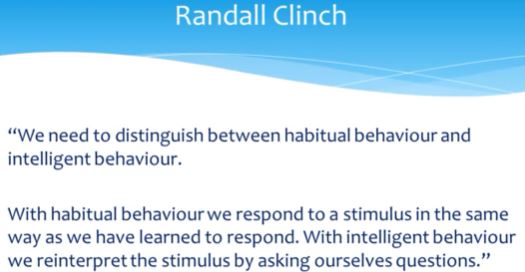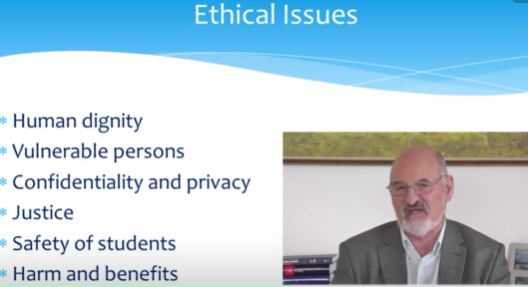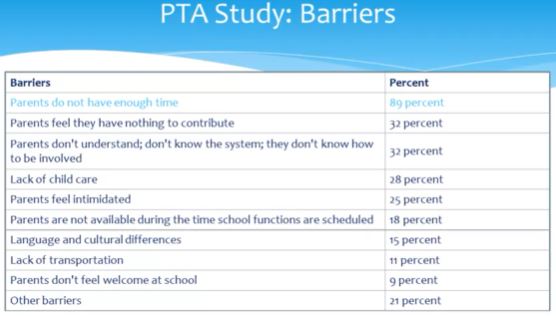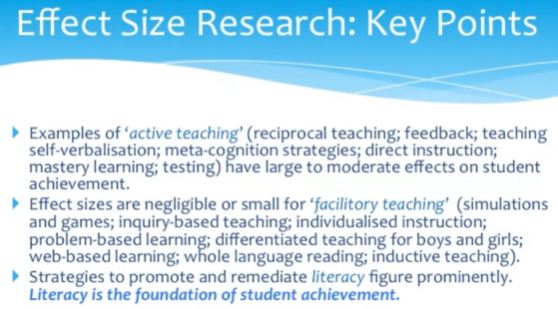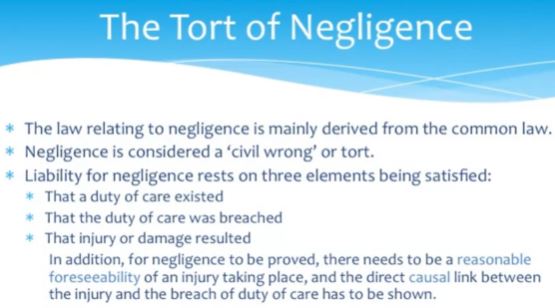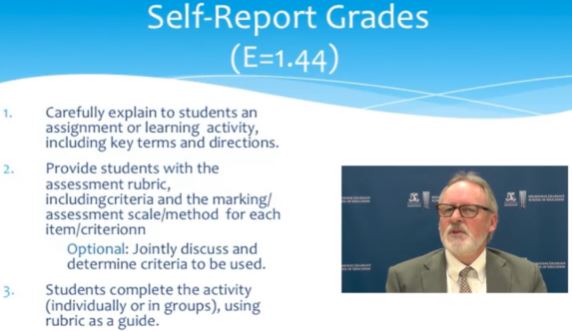#7 Foundations of Teaching for Learning: Being a Professional
tort n.侵权行为(不构成刑事犯罪但可引起民事诉讼)
Video: My values, beliefs and current philosophy of teaching
https://www.coursera.org/learn/professional-teacher/lecture/6dY2P/my-values-beliefs-and-current-philosophy-of-teachin
In the day to day work of a teacher, we can sometimes lose these deeper values, and fail to really think through the hows and the whys of what it is we do as a teacher.
It's very important from time to time to reflect upon these. Sometimes we can do this with colleagues in informal discussions, or we might do it through formal discussions, as part of annual appraisal meetings, that we've discussed previously, or other discussions with our supervisors.
We need to reflect from time to time on what it is we really hope to achieve as a teacher. And what this means for things like for example our ongoing professional development. Answering those questions that we've just raised is an important way, to stimulate your thinking about the important questions associated with being a teacher.
- I am a teacher because..
- Schools are important because...
- What is your responsibility to students?
- What is your responsibility to your fellow teachers?
- My responsibility to the teaching profession is to...?
- My responsibility to parents, the community and society is to...?
- My responsibility to myself is to ...as a professional, as a teacher, but also as a person
Evidence on effective teaching (2), 17:00/18:16
https://www.coursera.org/learn/professional-teacher/lecture/c2Kp5/evidence-on-effective-teaching-2
let's sum up some of the key research findings from effect size research.
Where the teachers actively involved in student learning, there is a large to moderate effect on student achievement. This includes techniques such as reciprocal teaching, where the teacher teaches a student who teaches another student. Feedback we've already mentioned as being an important influence on student learning. Self-verbalisation is where we get the student to articulate or explain what it is they are doing in a particular task. For example, the various steps in a mathematical problem and how they're approaching those. By doing so, they think carefully about the steps involved and we can also pick up where they're making a mistake. Direct instruction with the teacher orchestrates the learning. Mastery learning where we ask the student to increasingly engage with more difficult work that we've carefully structured. All of these things have large to moderate effects on student achievement.
However, so called facilitory learning, where students are left to their own devices to construct their own learning, or to discover or to inquire without much assistance, we know that the effects sizes here are fairly small.
Finally, literacy is absolutely important to student achievement. Literacy is fundamental to student learning. Every teacher needs to be a teacher of literacy. In other words, from the beginnings of primary school right through to high school, literacy needs to be a central part of the curriculum, because so much of schooling is literacy based. We know, for example that in the early years of high school, some students really start to struggle. And in fact their performance may well go backwards. And the reason for this is they don't have the literacy skills or tools they need to take their learning any further forward. So, literacy is fundamental and it is every teacher's responsibility. And this is why we need whole school approaches to literacy improvement.
Week 1:
Video: Teaching as a profession – characteristics of a profession and a professional
A profession is an occupation that involves specialised training and a formal qualification before one is allowed to practice or work. In other occupations this isn't the case. In many cases, for example, people learn on the job, watching somebody else gradually being shown what to do, and we would call this sort of approach a craft. When we talk about the body of people who make up the profession, or the occupation, we often give it a label: the legal profession, the medical profession, the engineering profession and so forth. Professions and members of professions often have significant responsibility, for other people and resources.
In terms of teaching, teaching qualifications are of two types, really. Well, they include two sorts of material: what content to teach, and then had to teach that content to certain groups of students.
Video: What society expects of teachers
Coleman Report (1966). Student achievement was determined by socio-economic status or background, in other words the wealth or not of the family. some high school students attended high schools that were basically aimed at preparing them for trades or apprenticeships or even unskilled work. So, boys typically studied things like woodwork and metalwork and the trades. Girls did things like typing and cooking and sewing.
However in other suburbs, in other towns, students of higher economic status often attended university from high school. So, their high schools prepared them for what we would call matriculation 大学入学考试 to either the so-called white collar professions or to universities or to higher study.
we now believe that the most important factor within the school affecting student learning is the classroom teacher.
Video: The importance of the teacher to student outcomes and development
Video: My reasons for becoming a teacher
A final thing of interest was that when we look at occupational satisfaction around the world, what we tend to find is that within a hierarchy, within an organisation, the people at top are the most satisfied and the least stressed, believe it or not. The people in the middle tend to be in the middle. The people at the bottom tend to be least satisfied, most dissatisfied and most stressed.
the most satisfied, least stressed people were actually school principals. Below school principals in satisfaction were deputy principals. The group with the lowest satisfaction, highest dissatisfaction and highest stress were actually the middle leaders in schools. The people who were heads of departments and coordinator
WEEK TWO ethics, codes of conduct, and standards for teachers
Video: Ethical, professional behavior for teachers
- The first of these is, accepting gifts and money from parents.
- The second is meeting with students socially out of school time.
It's important for teachers to maintain what we call
appropriate professional distance. In other words, you can be friendly to students but you can't be their friend. If you are seen with them socially, it could arise that people may well accuse you of either
favoritism or unprofessional conduct with those students. It depends what the situation is.
Treat fairly. - The third problematic situation is being alone with students. Quite possibly, during the school day. And quite possibly, out of the sight of other teachers.
- The fourth is giving preference to students of a particular background. It could be the more wealthy students, it could be students of particular cultural background, racial background, it could be the brightest students, or the least able.
- What about hugging students? Physical contact with students to show affection.
- Another one, is the issue of listening to students' personal problems, possibly to do with their relationships with their parents, their friends, their private lives.
generally speaking, it's not a good idea to make yourself available to listen to students' long list of problems. And certainly, it isn't a good idea to offer advice when you're not trained to do so.
If you're not a psychologist, a psychiatrist, a medical practitioner, a counsellor, it's best to put a stop to those sorts of discussions. But if you feel a student needs to discuss things with a professional, you should arrange for that student to talk to someone like a school psychologist or a school counselor.
- Listening to student complaints about other teachers. What could be problematic ethically about this situation?
- complaining about your principal to community members
If you talk to parents, members of the community, about your principal, in a critical way, there's no doubt that they will repeat that with other people. And, very soon, you might be in a situation where you're seen to be entering what's called
defamation, or making statements that are harmful about somebody's reputation.
I mentioned before that we would like you to be friendly with your students, but you can't be their friend. There are dangers in that you move beyond what the professional relationship is towards one that's more personal.

Video: Features and uses of professional standards
what do we mean by standard?
Now in olden times, a standard was literally a flag or a pennant or a banner that we carried into battle. And it had symbols on there that what was important to us, what our principles were. So for example, a banner or a standard with a lion on there would be symbolic of courage.An eagle, for example, may well also demonstrate courage, and wisdom, and sight, for example. Now, the word standard has been taken to mean the levels of performance that are acceptable or expected, and in some cases those that we are not hoping to see with a professional. Standards can be commonly understood, but sometimes they can actually be formalized in written standards, which are expectations we have for professionals.
And generally speaking, standards try and capture what it is we expect people need to know, understand, and do in a particular occupation.They make explicit what's expected of the role. They go further than job specifications, which are simply lists of duties. And they tend to be more about the higher level things that we expect people to demonstrate.
We can distinguish between two sorts of standards, content standards and performance standards. Content standards simply list the things that we expect people to know, do, and value as mentioned previously, but performance standards have built into them minimal levels of performance.
work of Ken Leithwood at the University of Toronto, and he distinguished between first and second generation standards.

We also need to consider the difference between a standard and a duty statement. Often when we apply for a position there is a list of duties that we are expected to perform. But these are not standards because they're not built around performance. They are simply duties or expectations to do particular tasks. Standards have a higher order in terms of the broader things we wish to achieve.
And at this point, I would issue a cautionary point. In working with educators around the world, I know that the word standard means different things in different countries. In some countries for example, standards are about minimal expectations for teachers. In other countries, standards are more aspirational and developmental. So standards have a particular meaning in different contexts.
Video: Registration, certification, appraisal and performance management
teachers in their first year of teaching will go through some process of being on probation, or having partial registration before they obtain full registration. And often, this registration is done by an external body. A teacher registration body which could be state based, nationally based, or in some cases, tied in with a particular system or employer. Once beginning teachers have gone through this year, and often there may be a period of induction, there may be various requirements to be demonstrated in that first year, and there may be reports that need to be provided by principals. They may be a portfolio. Teachers can gain for registration, which gives them full status as a teacher.
However, there may be other criteria as well. For example, some jurisdictions require you to pass an entrance test, as well as your college or university qualifications. So, it's important to realise what's required where you are working at the present time. Teachers who gained their registration, their full registration, are then said to be certified. And I'm aware the terminology varies, but normally when we talk about certification, we're talking about people. When we talk about accreditation, we're talking about courses. So, a teacher hopefully will have passed an accredited course, and then gone through a period where they gain full registration, at which time they're seen to be certified as a teacher.
Often certification has a time limit. It might need to be renewed every year, every three years, every five years. This is because we recognise the importance of teachers continuing their professional learning, and their professional development. So, in many cases, teacher certification is not forever, but teachers need to go through some process to demonstrate they're still meeting the standards that are expected.
process of identifying individual needs, working with people to improve their performance, we sometimes call performance management.
Video: Codes of conduct and discipline of teachers
We've previously considered codes of ethics for teachers, and these are broad high level principals that govern our behavior. Codes of conduct tend to be more narrow, and focus on what is acceptable and unacceptable behavior. Because of the position of trust, responsibility, and importance that teachers hold, as we've mentioned, there are high expectations for the conduct of teachers. Teachers who breach their code of conduct, may find themselves before a tribunal.They may find themselves losing their registration or certification, they may even find themselves facing court.
WEEK THREE legal and administrative responsibilities of a teacher
Video: LectureThe duty of Care
It's important to understand the two main ways that the law is made. The first is through the decisions of judges in courts, and we refer to this as common law, or case law. This has been built up over time and, acts as precedent of the sorts of things that we can and can't do in society. Law reports are sometimes published and these have significant cases in them which judges outline their reasons for their particular decision. These serve as important cases for future debates, future action in education. So, the power of precedent is quite powerful and goes across international boundaries. So, it's not unusual, for example, to hear in a court case examples of significant cases that have come from other jurisdictions and other countries.
"In Loco Parentis", which basically means, in place of the parent.
Teacher's authority comes from things like legislation. Which requires students to attend school up to a certain age and through teachers' authority to practice through things like certification as we've mentioned before. In actual fact, the duty of care that teachers owe to their students is greater in some cases then the duty of care that a parent owes their children. One example is, that it would not be unusual for parent to leave a seven or eight year old child unsupervised in a room, while they went to do something in another room.
A statute is a law that has been passed by parliament. It begins with a bill which then becomes an act and is binding. criminal law its made through parliament. It's considered statutory law.
Usually, with criminal action, there is a prosecutor and and a defendant. And an important consideration for us is that offences need to be proved beyond reasonable doubt.
The burden of proof in civil cases is less than that in criminal cases. In civil action, you only need to prove on the balance of probability that something has occurred as the result of someone's action. Balance of probability means more likely than not.
vicarious liability basically means where the buck stops. In a school, the principal is really the key person in terms of responsibility. They may well have other responsibilities outside the school, but within the school, they are the key person. And as a result, teachers are under their supervision. Likewise students are under their supervision.
Video: LectureNegligence (Part 1)
Video: LectureNegligence (Part 2)
Video: LectureA duty to educate
Video: LectureThe rights and responsibilities of students, parents and teachers
Question 1
Common or case law:
Is made by judges in courts.
Question 2
A duty of care between teachers and students arises because:
Teachers are in positions of responsibility. (right)
Statute law applies. (wrong)
Students are not adults. (wrong)
Question 3
In which situation would a duty of care between teacher and student not arise and apply?
A teacher sees a student at a supermarket on the weekend.
Question 4
The difference between civil and criminal courts is that
People can be sent to prison by a criminal court.
Criminal cases must be proven beyond reasonable doubt.
Civil court actions must be proven on the balance of probability.
All of the above are true.
Question 5
Vicarious liability means:
People can be tried even if they are not in court.
Teachers are responsible for the actions of their students.(Wrong)
Employers can be found liable for the actions of their employees. (right)
Parents are responsible for the actions of their children. (wrong)
Question 6
Negligence is:
A breach of the duty of care.
Question 7
Liability for negligence rests on three elements being satisfied:
A duty of care existed.
There was a breach of the duty of care.
Question 8
Educational malpractice is:
Very common in the courts.
Where a teacher accepts money or gifts from parents.
Where a student experiences some form of intellectual harm. (right)
Where a student is physically injured at school.
Question 9
The rights of children are governed by:
The UN convention on the rights of the child.
Question 10
Parents of children have the right to:
Tell the teacher what to do.
Determine the curriculum followed in a school.
Enter the school at any time.
None of the above is true.
WEEK FOUR developing a personal philosophy of teaching
Video: How teaching and education changes lives
Visible Learning by 1st Eby John Hattie (Author)
Video: Evidence on effective teaching (1)
We need to distinguish between socio-economic status and family background, because it is possible, for example, to have a very effective family in a low socio-economic status household or school and conversely, we could have in a high socio-economic background, a dysfunctional family.
With zero being a medianal average SES, 2.5 being high, minus 2.5 being very low socio-economic status. in the low SES schools below minus 1.5, we see much the same sort of distribution of student achievement as we see in higher SES schools. So, while SES is associated with student achievement, it's a very big mistake, For example, to assume that all students in a low SES school or community are low in ability.Plainly, they are not. Likewise, when we look at low student achievement, generally, we can see it spread across the SES spectrum.
One of the big mistakes we make in education is to stereotype or stigmatise or draw conclusions about students because of the type of school they're in or the sort of background that they have.
- The facts are that poor student performance is spread across the SES spectrum.
- Schooling is something of an obstacle course. Some students have certain advantages, others don't.




one form of categorisation, which is a particular concern is that of learning styles. That is, categorising students on the basis of their supposed learning style, or the style in which they learn best. There are many, many, advocates for this, but when we look at the research, background for this notion, the evidence is actually very, very weak. Most of the publications have not been refereed, not been through a thorough process of validation. The issue here is that teachers want their students to learn. And we can understand their enthusiasm for what appears to be a way of teaching more effectively. But when the research has been examined in terms of linking a particular learning style with a particular teaching style, it's not been supported.
And this reinforces what Carol Dweck was talking about with entity thinking. That labelling, the limiting of learning experience has all been found to be quite problematic. And yet learning styles persists as being an approach that supposedly leads to enhanced student outcomes.

Video: Evidence on effective teaching (2)
Now, what about multiple intelligences? This comes from the work of Howard Gardner and Project Zero at Harvard. And this work originally arose because of an interest in things such as brain injury. The notion here is that there's a range of intelligence types and once again, if we could match our teaching to the particular intelligence that the student is strong in, if you like, we could enhance their learning. Howard Gardner himself is quite dismissive of this, and in fact has raised quite strong concerns about how his work has been misused in education.

Another concept of interest is that of constructivism. Now, there's good news and there's bad news on constructivism. Constructivism is how we make sense of the world on a daily basis, how we experience new knowledge, experiences, and we make adjustments in our minds basically about our understandings of things. Constructivism is a legitimate theory of learning. The problem is, constructivism is not a legitimate theory of teaching. You can't teach in a constructivist way. You teach as best as you can and constructivism takes place in the minds of the people that you are teaching. One of the problems with constructivism is the word itself, which implies it is some sort of physical activity, and some people have taken this to mean. Students will learn better if they use their hands, if they make models for example.
And then we talk about social constructivism where students may well work together on these sorts of projects. Unfortunately, the review of the literature is not supportive.Leaving students to their own devices to construct their own learning, through things like unguided inquiry, have been found to be very, very weak influences on student achievement.

I'm now going to give you an example of something which can have a very powerful effect on student learning.Self-report grades have an effect size of over 1, in fact approaching 1.5. So, how can we use this particular technique and, why isn't it used more widely.
Something else which has a large effect on student learning is something called direct teaching. Now, this is misunderstood quite widely. Some people see direct teaching as either teaching from a textbook or a teacher spending a lot of time speaking or lecturing students but in actual fact, direct teaching is where the teacher orchestrates the learning of the student. This connects with our previous work on self-report grades, incremental views of learning and so forth. The teacher has a clear understanding of what he or she wishes to achieve in the lesson. And has planned that lesson accordingly.

An important aspect of effective teaching is feedback, that is feedback from the teacher to the student. If students don't receive regular constructive feedback, they can be frustrated. They may not understand the standard that's required.They may become disillusioned. They may view themselves as being incapable of mastering the particular task and that's where entity thinking, again, takes over.
I've found that students need answers to four questions to move there learning forward. The first is they need to know what they can do. Not forever, because that's dangerous, entity thinking, but what can they do at this present time, in say, year eight mathematics, for example. What is it they can't do at this present time? Where are the areas where they're challenged, for example, they're having difficulty? Now, frequently that is of the two things that we know as ticks and crosses, and that's as much feedback as people get on their performance. It's not helpful. The third question need an answer to is, how does my work compare with that of others in the standards expected? This is more useful. But again, we need to make sure that we're not giving people a view of themselves that's either overly inflated. In other words, we're trying to boost their self esteem. Or we're giving them a view that their abilities are limited. But the most important question of all is question four. How can I do better? And frequently, the feedback that we give to students does not include this important developmental role or function.
we know from research that if we put a mark or a grade on a student's piece of work, that's the first thing they go to, and it either reinforces or not their own view of their ability. If we want them to read our feedback, our written feedback for example, it's actually better not to have a mark or grade on the paper.

The first is to actually consider your current approaches to feedback.
What forms of feedback are provided to students on their learning? Verbal? Grades? Marks? One to one discussions? some observation of each other's teaching can be quite useful.
What about our assessment methods? What about the methods we're using to gain an understanding of what our students can do? Are they clear? Valid? In other words, they measure what they're supposed to measure. Reliable? In other words, we can measure what we're trying to measure consistently. Is there a link between assessment and feedback? In other words, is the feedback congruent, as I've mentioned previously.
An important point is whether students understand the feedback that they're getting. If it's a mark or grade that may not help them very much. If it's a comment that includes some jargon, students may find it difficult to understand that feedback.
Is the feedback students receive in your school, for example, infrequent? Unfocused? Unfocused feedback would be something like "Work harder." Is it unhelpful? Is it inconsistent? Is it largely negative?



Quiz 4
Question 2
The biggest within-school influence on student learning is:
The classroom teacher.
Question 3
Successful teachers and schools have a central focus on:
Knowing every student as a learner and a person.
Question 4
Socio-economic-status:
Is not about potential to learn.
Question 5
A problem with putting students into categories is that:
Students can see their abilities as fixed.
There is little evidence for the categories used.
Students may not try because of entity thinking.
All of the above are true.
Question 6
Self-esteem or self-concept:
Arises from genuine progress and achievement.
Question 7
Direct teaching means that:
The teacher has a clear view of his/her learning intentions and how to achieve these.
Question 8
The following aspect of feedback has the largest effect on student learning:
Telling students how they can do better. (right)
Telling students what they can’t do.
Telling students what they can do.
Telling students how their work compares with that of others.
Question 9
The foundation of student achievement is:
Literacy.
Question 10
Personal reflection is important to teachers because:
From time to time we need to think more deeply about what we do.
WEEK FIVE being part of a professional learning community.
Video: The power of professional learning
Video: Professional learning communities in education
Video: Action learning using evidence
informed evidence-based risk taking and innovation.
Video: The role of leadership in professional learning
in our experience, building a learning community should not be seen as fixing teachers who are somehow not performing to the level that we expect. In other words, we don't want a deficit approach. We don't want an approach which is critical of people, which is critical of practices, what we want is a positive approach where people can be motivated to reflect, to improve, to experience success, to be motivated to work with colleagues.
Question 1
Teacher professional learning:
Has a large influence on student learning.
Question 2
It is important that teachers’ professional learning:
Has a strong evidence or research base.
Question 3
Teacher professional learning today is more effective when:
It addresses issues of importance or problems within the school.
It occurs collaboratively with teachers learning together.
It is on site and embedded.
All of the above are true.
Question 4
The central purpose of teacher professional learning is to:
Improve student learning.
Question 5
The “big ideas” behind learning communities are:
Ensuring that students learn.
A culture of collaboration.
A focus on results.
All of the above are true.
Question 6
Pedagogic terminology is important in professional learning because:
It gives us a language to talk about teaching and learning.
Question 7
Overall, what works best in establishing a professional learning community?
External advice and support coupled with a focus on internal issues.
Question 8
According to Robinson et al, the leadership dimension with the greatest impact on student learning is:
Promoting and participating in teacher learning and development.
Question 9
Which form of leadership appears to have the greatest impact on student learning?
Instructional leadership.
Week 6
Video: Reflection, self-assessment and goal setting
Video: Gaining and utilising feedback from others
One is the fact that the observations need to be focused and need to be diagnostic. They need to be collegial and collaborative and not judgmental.But once again, it's important the teacher concerned receives feedback and that that feedback is constructive.
Video: Formulating a personal professional development plan
Video: Keeping a balanced life – teacher stress and satisfaction


